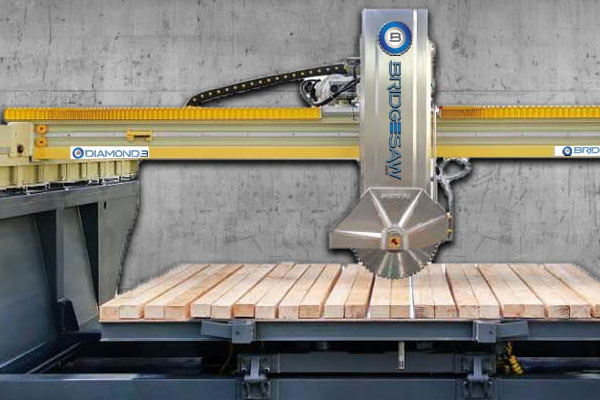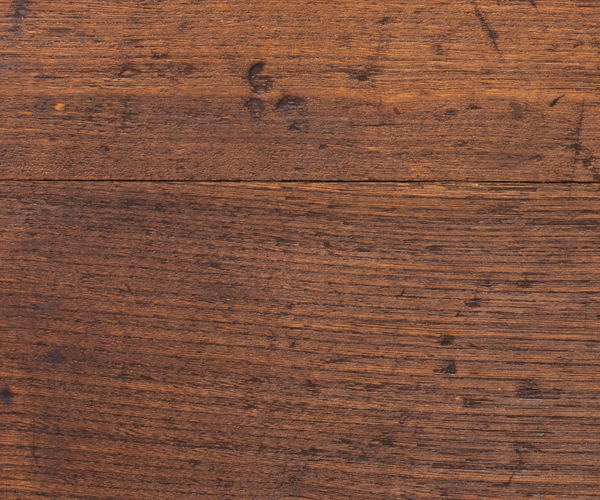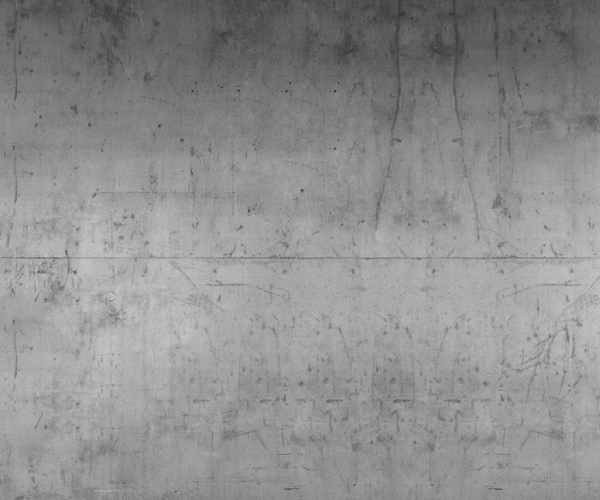To Rock or Not? Wood or Stone on Your Bridge Saw Table

To Rock or Not?
I’ve been working on machines for my entire adult career. When I changed course over 10 years ago to work exclusively in the granite and stone machinery industry, I was asked the weirdest question, one that I had never heard before. “Should I put concrete or wood on the table of my bridge saw?” I wanted to help my fabricator and make sure I gave him the best answer, but I quickly found out, that wasn’t an easy question.
So, which is it? To rock or not?
Let’s look at the advantages of both and I’ll also give you some thoughts from a few of the hundreds of fabricators that I have posed this question to over the past 10 years.
Wood
Pro: Wood is much lighter than concrete
As a machine technician that is in the bridge saw repair business, my first thought when I see a wood tabletop is, “I’m probably not going to have to worry about the table hydraulics on this machine.” Let’s face it, granite is already heavy and takes a toll on your machine hydraulics. Why make that worse with another ton of concrete for the hydraulics to lift every time you load a slab?

Con: Pressure treated/marine grade wood is more expensive
I did a calculation, and figuring that the average bridge saw table is 11’ x 6’ depending on the layout and how many layers of wood you use, you’ll need about 24 – 2x6x12’s. At a cost of about $12 each, that’s almost $300 just in material. Let’s not even talk about how long it’s going to take you to cut and screw each of those boards to the table.
Con: Bad for the blade?
This is definitely a con. Will it damage your expensive diamond blade? No, but what it will do is create a rough cut because of the fibers in the wood. When the blade rips the wood, it could cause the blade to deflect, and we all know what happens when a blade deflects . . . an uneven cut and a poor seam.
Concrete
Pro: Cost
Concrete is cheap. Let’s look at the same equation we used earlier. An 11 x 6 table with 1.5” of concrete would take 20 – 50 lb. bags of a high-PSI grout mix 5,000 or more. That only costs $60 total. Four 2 x 4 x 12s to frame it up and you’re under $70 for materials. Please don’t use more than 1.5” of concrete. I’ve been in shops that have to use their forklift to raise the table because they did a 4” tabletop! Why!? There is no need.

Pro: Only build it once
Another benefit to concrete is that you set it and forget it. Well . . . kind of. Unlike wood, once you pour your concrete table, you shouldn’t have to tear off the old to redo it. With concrete you can simply mix a new small batch and top off the cuts of the table and re-plane it to keep it level. If you aren’t planing your table on a regular basis, we need to talk.
Pro: Better for the blade
Blade manufacturers recommend that you do a thing called “dressing” your blade. That means you run it through a piece of stone, such as concrete that is less abrasive, something more porous than the granite you are regularly cutting. Concrete has this advantage, while you are cutting, when the blade hits the concrete it will peel away that steel covering the diamonds and, in a sense, sharpen your blade.
Pro: Perfect cutting surface
Concrete is self-leveling and once it’s dry, if you use a high-PSI mix, it’s not going to crumble or crack. You’ll have a surface that will keep your piece of granite level and give you the best cut you’ll see from a bridge saw.
Con: Weight
But weight . . . is this really a con?? I said before that one pro of wood is that it’s lighter and while I do like that for the machine, most bridge saw hydraulics are built to handle your granite slab AND a concrete table. When purchasing a new bridge saw, make sure it has the capacity to handle your granite slabs PLUS a concrete table. If you are making a new table for your current saw and have made the choice to use concrete, check with your bridge saw manufacturer to verify that it can handle the weight.
Our conclusion? Rock on!
Even though it’s CONcrete, you can see that we have many more pro’s when it comes to using concrete for your bridge saw table. As long as you’re keeping the table level and planing it on a regular basis, you’ll see the benefits of concrete much longer than if you use wood.
I’d love to hear your opinion. Email me anytime at James@BridgeSaw.com.